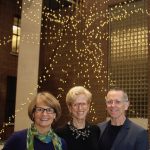Ralph Helmick sculpture at School of Dentistry adds distinctive new element to the University of Michigan campus art collection13 min read
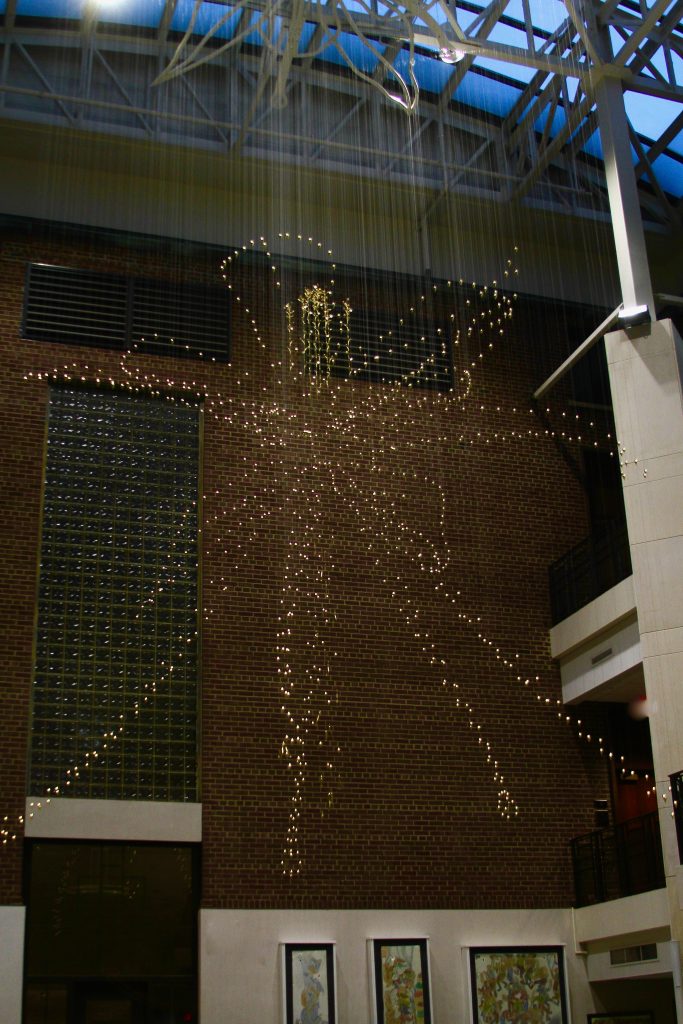
Ann Arbor, Mich., April 12, 2022 – A new art installation at the School of Dentistry brings a distinctive addition to the portfolio of art on the University of Michigan campus, school and university administrators said during a reception celebrating the artist and his striking creation.
Perennial is a sculpture by award-winning artist Ralph Helmick that hangs in the dental school’s enclosed three-story atrium. It is composed of more than 900 gold-leafed elements suspended by fine braided steel cables from a water-jet-cut aluminum frame to form a 3-D rendering of a columbine flower. Most of the hanging objects are variations of bicones, a geometric shape chosen for the appealing way it reflects light. The sculpture also includes gold-leafed dental hand instruments, such as dental mirrors and forceps, that were donated to the art project by alumni of the dental school.
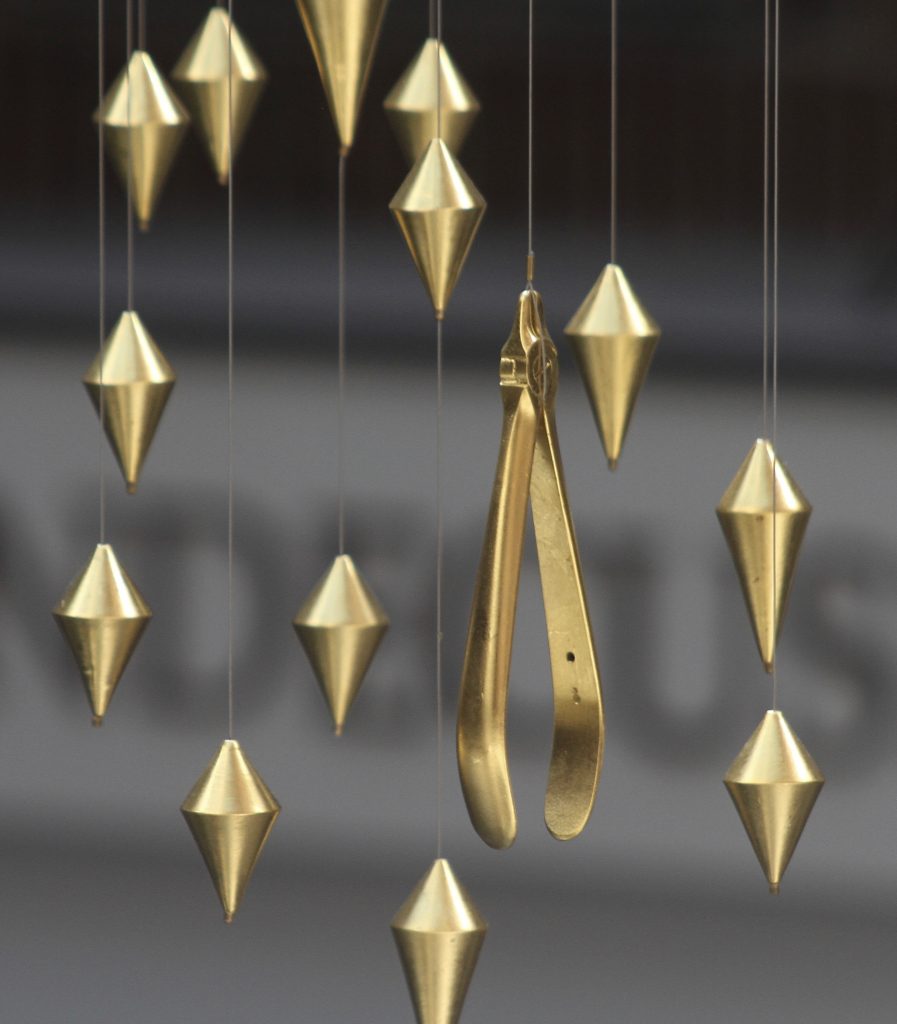
The sculpture appears to be lit from within but its luminous quality is produced when light shining through the atrium skylights by day or artificial light at night is reflected off the 24 carat gold surfaces. After the sculpture’s installation in December, dental students, faculty, staff and patients have marveled at its beauty and composition, whether looking at its individual parts from two balconies next to it, or when viewing from ground level, where the best vantage point for perceiving the entire shape of the flower is near the atrium entrance of Café 32.

The choice of sculpting a columbine flower at the dental school pays homage to the late Professor Albert Richards, a faculty member at the school from 1940-1982. A world-class expert on dental radiology, Richards used his expertise with x-rays to create artistic radiographs of flowers that show the intricate and beautiful internal elements within their external structures. The black-and-white radiographs, which became his lifelong hobby, appeared in text books, calendars, encyclopedias, museums and many magazines in this country and internationally. After retiring from the dental school, Richards published a book in 1990, The Secret Garden, which contains 100 of his best flower radiographs. Included in that collection are two columbine images that Helmick used as models for Perennial.
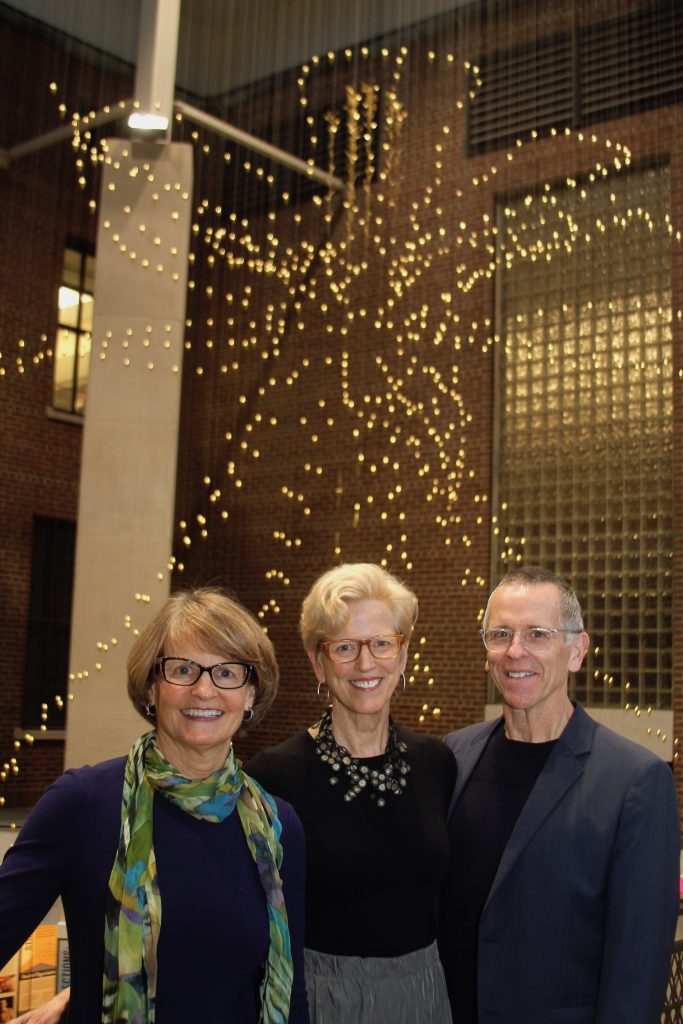
Helmick’s commission for the School of Dentistry came about after Dean Laurie McCauley met his wife, Dr. Nan Niland, a 1979 alumna of the dental school, in 2013. McCauley learned that Helmick was an acclaimed artist and she was impressed by photos and videos of installations he has done around the country and in the United Arab Emirates. McCauley invited Helmick to create a work of art for the dental school atrium. He agreed as a way to honor his wife and the school that provided the foundation for her career as a dentist.
“One thing that has impressed me over the decades that Nan and I have been married is how devoted she is to her alma mater here,” Helmick said. “This is a very special place. When Laurie broached the subject, I thought this is a fascinating opportunity to have me acknowledge Nan and Nan acknowledge her alma mater.”
While considering what form his piece would take, Helmick embarked on the extensive research he does for each of his public art commissions. It led him to Richards’ trademark radiographs. Not only was Richards’ work beautiful and inspiring, but Niland fondly remembered him as one of her kindest instructors. Many of Helmick’s 50-plus public works address the meeting of art and science so all the aspects of the story just seemed to connect perfectly, he said.
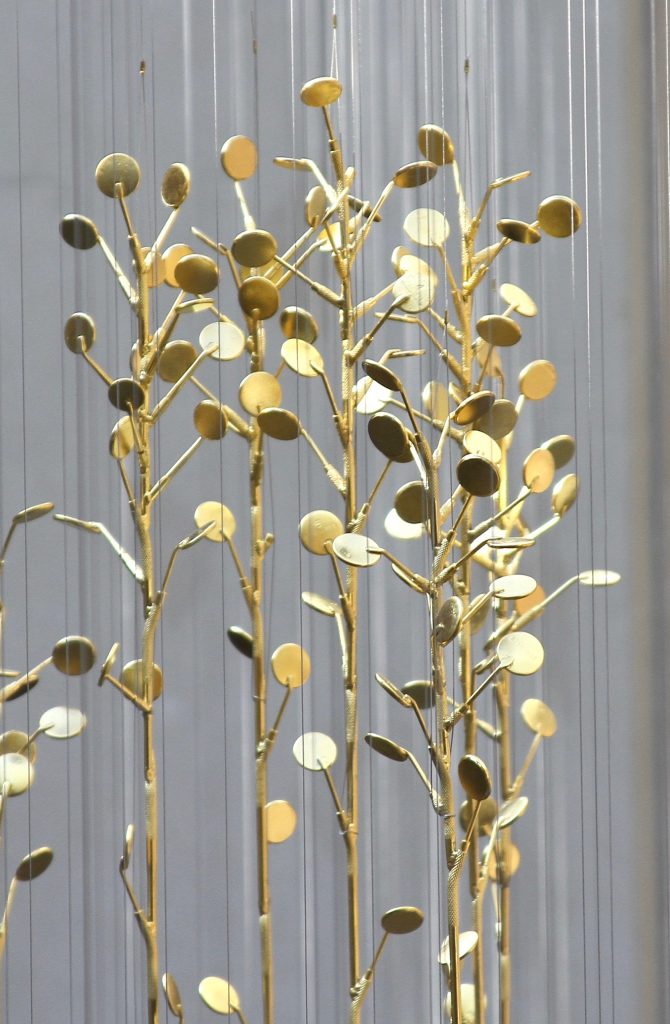
Helmick’s favorite radiograph was the columbine, for its dynamic beauty, but also for its “sculptogenic” form. He made sketches from a Richards radiograph, then worked with a programmer to create a computer-assisted-design spreadsheet. It guided the precise locations on measured cables to attach the gold-leafed bicones and dental instruments that form the columbine image. Describing the process from start to finish, Helmick calls it “making a 3-dimensional image from a 2-dimensional radiograph of a 3-dimensional flower.”
At a reception for the work on April 5, Susan Gott, the university’s Campus Planner and a member of the U-M president’s Advisory Committee for Public Art, thanked Helmick and the dental school for bringing the “unique, inspiring piece” to campus. “Public art is fundamental to our mission, whether it’s our mission for teaching or research or clinical care or community service,” she said. “Art creates a sense of belonging and connection to a place. It can build community. It can help activate and draw people in a way that creates new memories. It creates a collegial experience.
“I feel so grateful and honored that we get to welcome this piece together into the collection,” Gott said. “It is extraordinary in its magnitude. It is so expressive. The collection on our campus ranges in media, in scale, in style, in era, in material. This stretches the diversity of the collection even further. I think it is bringing something that is really transformative for the university.”
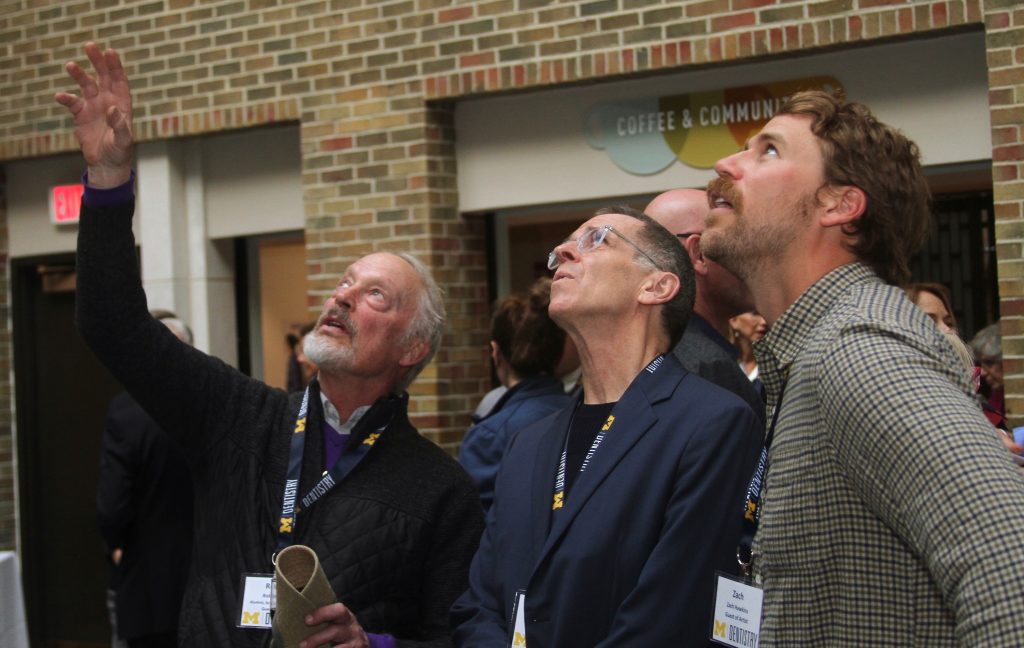
Christopher Audain, Managing Director of The Arts Initiative at the university, also addressed the importance of art at the reception. He said art is unique in the way it can imprint meaning on space and tell a multitude of stories all at once. “I believe in the power of the arts to bring people together. Art also makes us look more carefully and experience where we are. Art endures, whether it be a painting or a sculpture or a song or story or installation,” Audain said.
Audain said the reception was in many ways a celebration of the merger of art and science by both Richards and Helmick. “The more ways we find to come together and appreciate the moment we are in, the better. Let’s take a moment, together, to appreciate this,” Audain said, pausing as the audience collectively looked up at the sculpture above them.
In thanking the audience and those who facilitated the installation, Helmick said his goal as an artist is to encourage contemplation and reflection in a world that has become increasingly busy and distracted by non-stop communication. He said the sculpture may seem complex, but his intent was simple – “I wanted to make something beautiful.” While the site, its history and the intended audience are important factors as he plans a project, the art itself is the ultimate focus. “A piece just has to look great without any of that,” he said in an earlier interview. “It just has to be its own standalone expression that engages me personally as an artist.”
Niland shared that the colorful installation by Helmick in the lobby at the Yawkey Center for Cancer Care in Boston is an example of the power of her husband’s art to provide a source of pleasant engagement, in this case for families enduring the anxiety and discomforts of cancer treatment. “Countless people have told us how meaningful it is for them,” she said. “To be in that situation and to have something beautiful to look at and to distract them and allow them to reflect on other things.”
Niland said Perennial has many of the same qualities. “It is just so uplifting. Even if you are right underneath and can’t see the macro image of the flower, it is like golden rain. It is just lovely.”
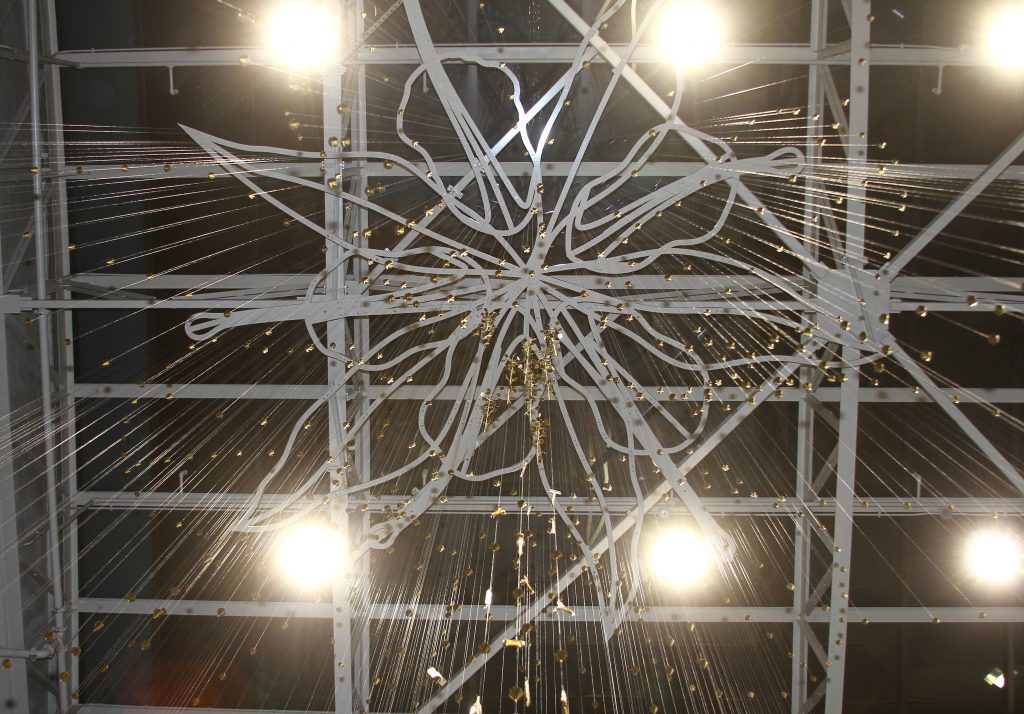
Based in Newton, Massachusetts, Helmick has installed public sculpture commissions from coast to coast, including at airports in Chicago, Philadelphia, Tampa and Seattle; university and scientific research centers, including the Massachusetts Institute of Technology and Notre Dame; numerous state and federal buildings, including justice centers and courthouses; healthcare buildings; and convention and civic centers. One of Helmick’s most acclaimed works is “The Constellation,” a monumental installation that forms the centerpiece of The Founder’s Memorial Park in Abu Dhabi, United Arab Emirates. The stunning sculpture is a permanent national tribute to the UAE’s founding father, the late Sheikh Zayed bin Sultan Al Nahyan. The sculpture won the prestigious CODAaward for International Institutional Artwork in 2019.
Helmick has a Master of Fine Arts degree in sculpture from the School of the Museum of Fine Arts in Boston and Tufts University, and he studied at the Skowhegan School of Painting and Sculpture in Maine.
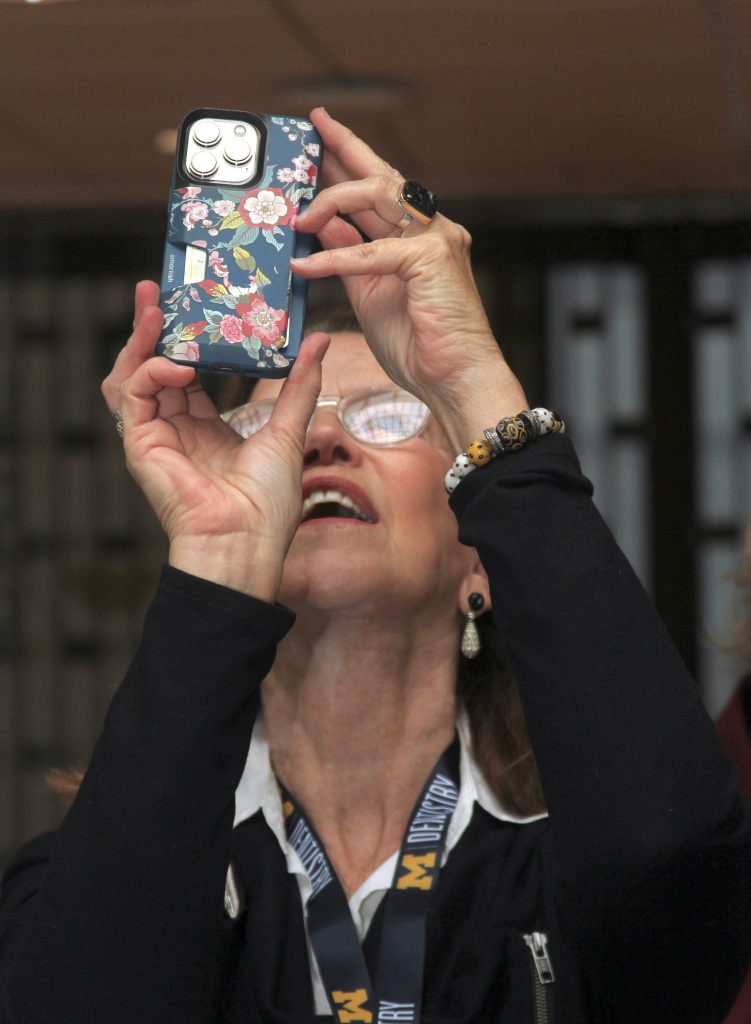
Both Helmick and Niland earned their undergraduate degrees at the University of Michigan, where they first met as Resident Assistants in the Mosher-Jordan residence hall. Years later they reconnected and married. After graduating from dental school and completing a one-year residency at the University of Vermont Medical Center, Niland spent her entire career as a dentist in the Boston area before officially retiring earlier this year.
Dean Laurie McCauley called the installation of the sculpture “a dream come true” that was nine years in the making after she first met Niland. Helmick was engaged in other projects and installations that had to be finished before starting on the dental school project, which took about two and a half years once it was initiated. McCauley thanked Helmick for his generous effort on the project, which he donated to the school, as well as members of the dental school community, including alumni, who contributed to the cost of the installation. Dr. Nan Niland’s sister, Dr. Nona Niland, a University of Michigan School of Medicine alumna, made a substantial contribution toward the cost of materials and installation. McCauley also thanked those alumni who responded to her request for dental instruments to be part of the sculpture, including the family of former Professor and Director of Clinics Frank Comstock.
McCauley noted the sculpture’s title of “Perennial” can be expanded beyond its meaning for flowers to include the educational philosophy of perennialism, which is fitting since the sculpture’s home is in an educational setting. Perennialism focuses on teaching things that transcend time and that develop minds that can think critically.
The dental school is fortunate and grateful to have the new art gracing its atrium, McCauley said. “This piece with its beauty, historical context, generosity from our community, a husband’s devotion – what more could you ask for in a piece of art?” McCauley then led a toast at the event, “To art, to the artists who perennially lighten our lives, to our generous community, and to colleagues who become dear friends.”
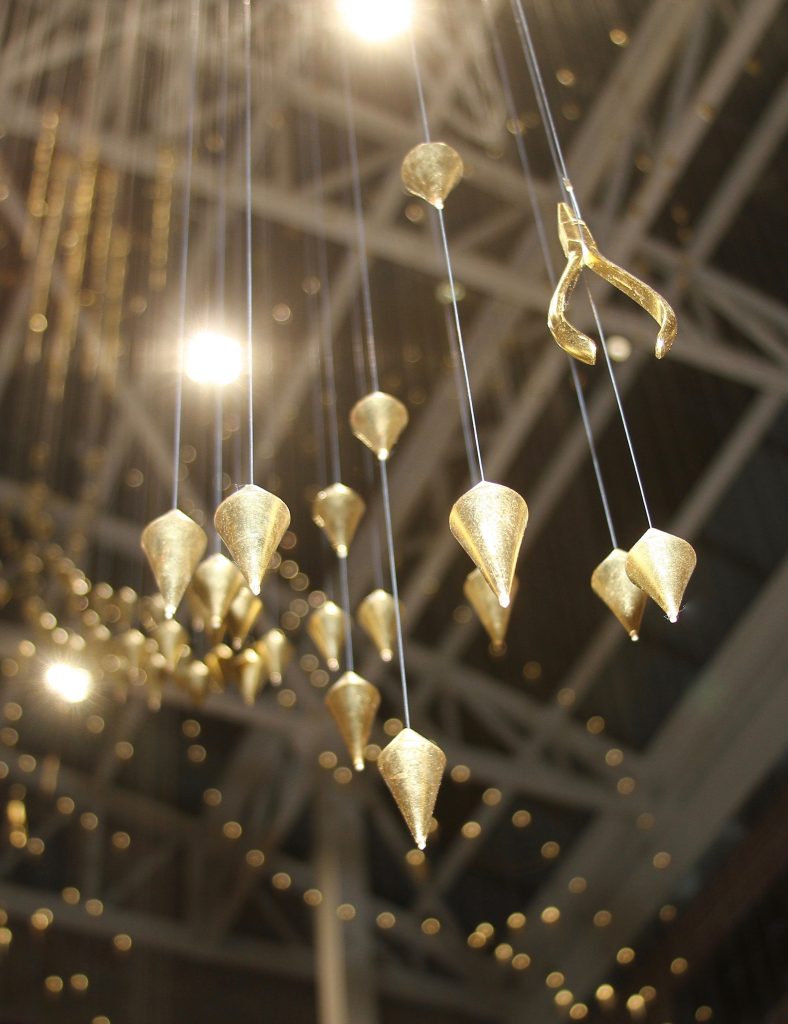
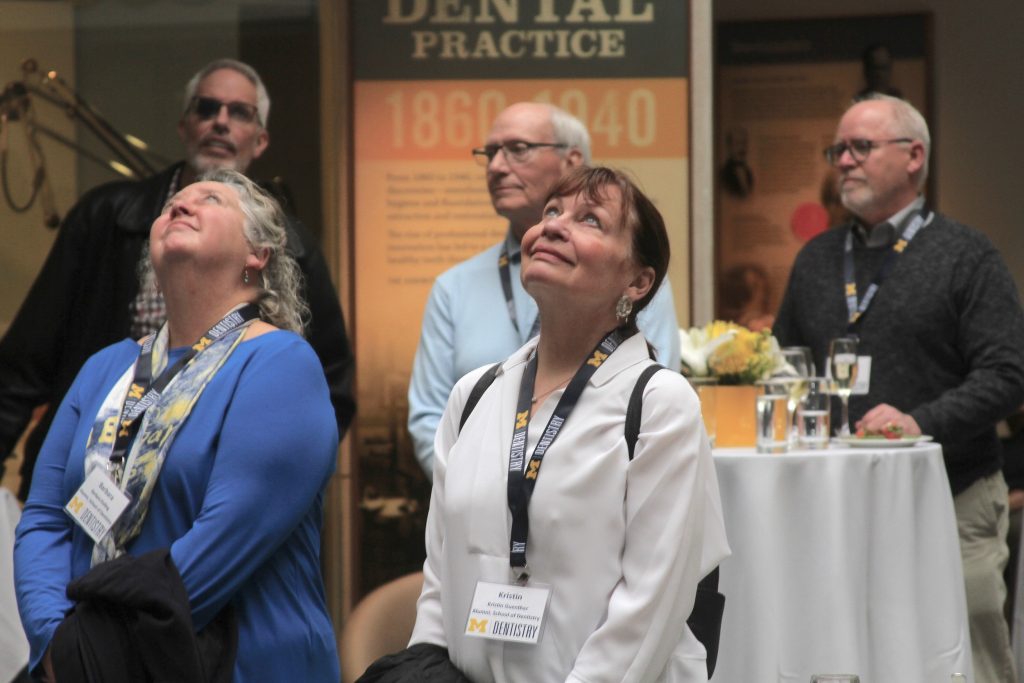
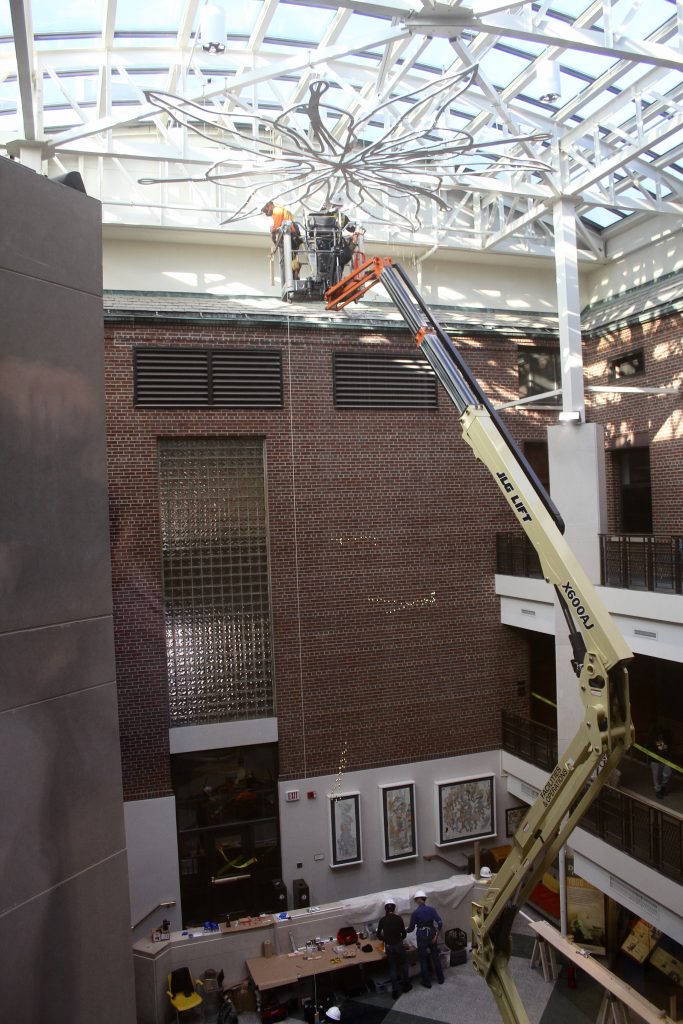

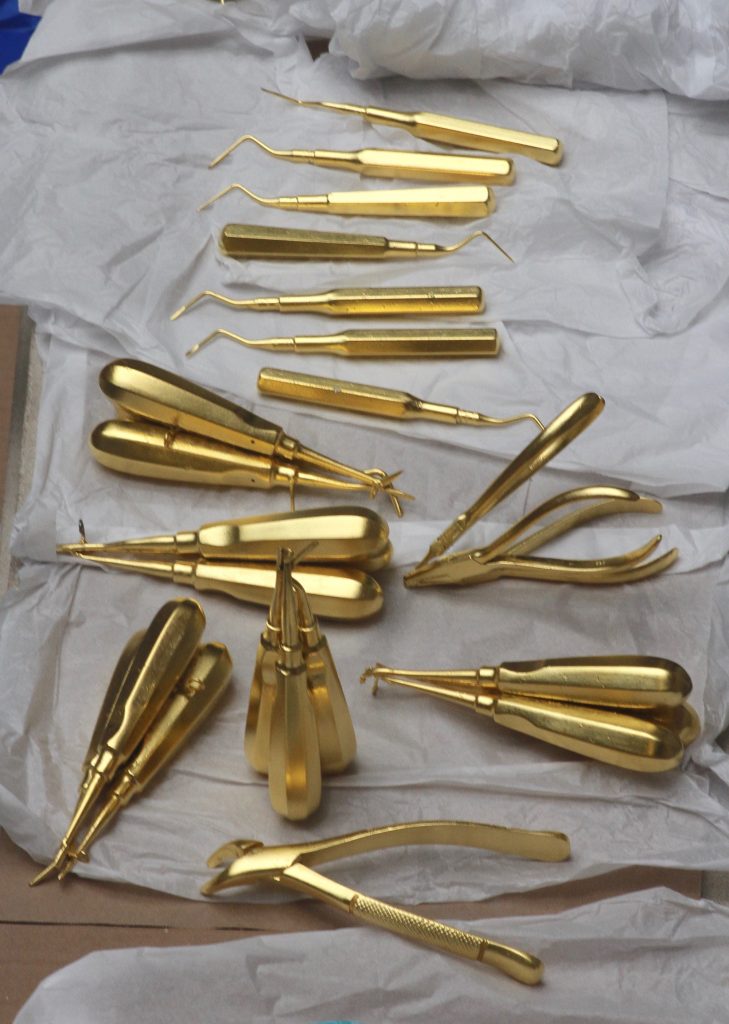
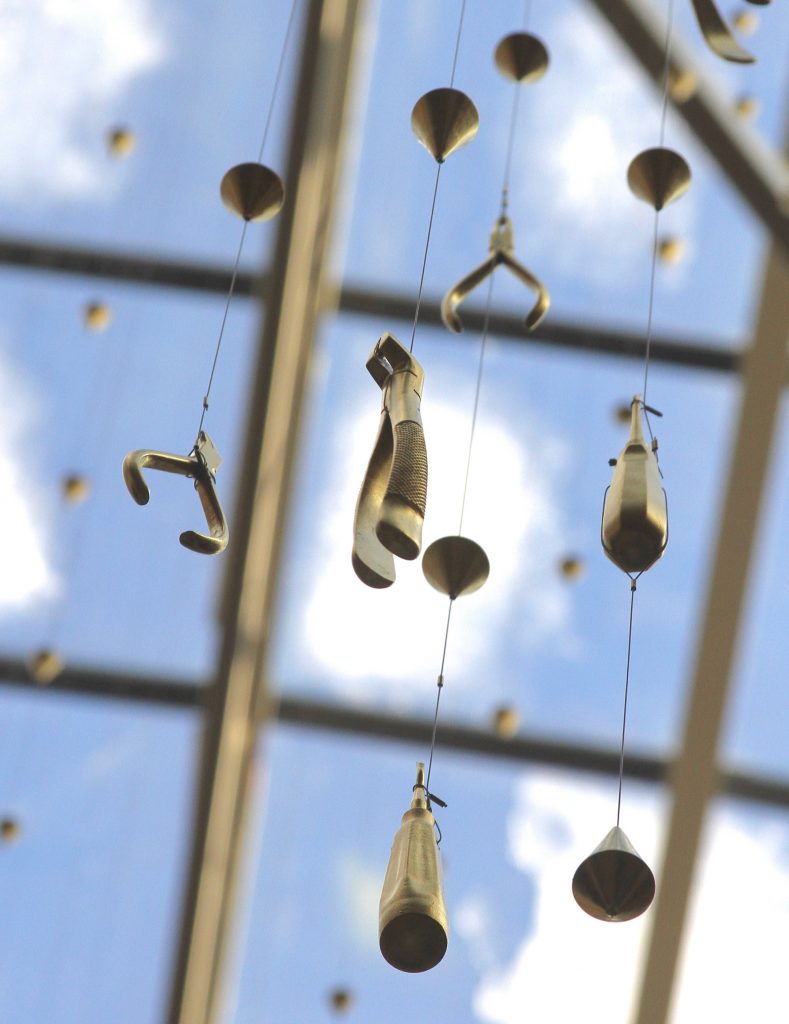
###
The University of Michigan School of Dentistry is one of the nation’s leading dental schools engaged in oral healthcare education, research, patient care and community service. General dental care clinics and specialty clinics providing advanced treatment enable the school to offer dental services and programs to patients throughout Michigan. Classroom and clinic instruction prepare future dentists, dental specialists and dental hygienists for practice in private offices, hospitals, academia and public agencies. Research seeks to discover and apply new knowledge that can help patients worldwide. For more information about the School of Dentistry, visit us on the Web at: www.dent.umich.edu. Contact: Lynn Monson, associate director of communications, at [email protected], or (734) 615-1971.

